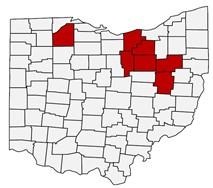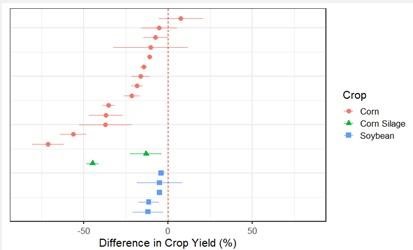By Steve Culman and Theresa Brehm
Numerous underground oil and gas pipelines have been installed through Ohio farmland over the past several years. This has left many growers wondering if this installation will have lasting impacts on their soils and crops.
Last fall, we collected soil and yield samples from 24 different farms impacted by pipeline installation in seven counties throughout Northern Ohio (Figure 1). The Rover, Utopia, and Nexus pipelines were targeted because of their recent installation, with each pipeline installed within the last 3-4 years. Grain crops like corn and soybeans were the primary focus. We sampled in two major zones for this study: the right-of-way (ROW) over the pipeline, also known as the easement area, as well as an adjacent, undisturbed area of the same field. Three areas of each field were sampled along a transect. This comparative cross-section of an impacted field provides a pseudo “before-and-after" viewpoint of the field

Figure 1: A map of Ohio with counties highlighted where Fall 2020 pipeline sampling occurred.
In preliminary findings, Ohio crop yields follow similar patterns to previous studies when pipelines are installed. On average, corn grain yields decreased an average of 23.8%, silage corn decreased an average of 28.8%, and soybean yield decreased an average of 7.4% over the pipeline compared with adjacent areas. Figure 2 shows yield data with each point representing a different field. Negative values to the left of dashed red line indicate percent yield reductions over the pipeline relative to the non-impacted area. Soils within the ROW had more rock fragments, lower soil moisture, and had a higher resistance to penetration which indicates lasting forms of soil compaction.

Figure 2: Percent difference in crop yield for corn grain, corn silage, and soybean along Right-of-Way compared to adjacent, undisturbed areas of the field.
Source : osu.edu